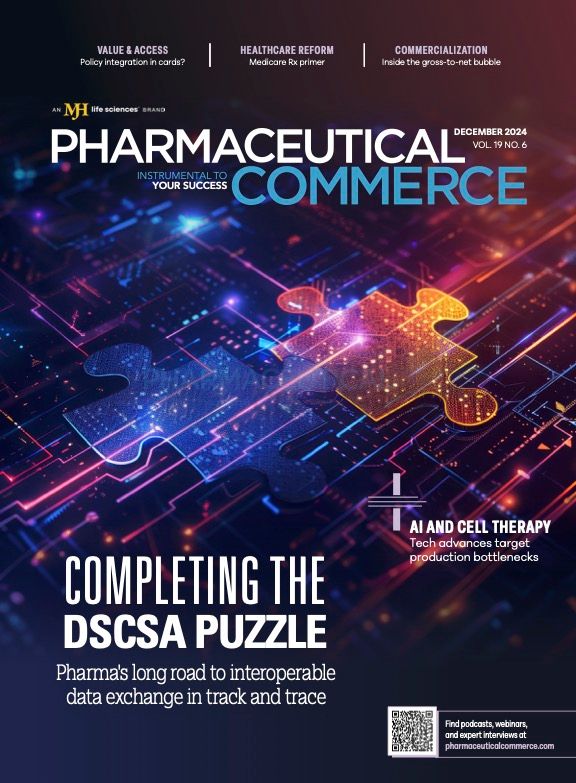Going Inside the Gross-to-Net Bubble and Its Nuances
A crash course on the bubble itself, including therapeutic areas most affected.

This column marks the first of a six-part series on “Popping the Gross-to-Net (GTN) Bubble" in the pharmaceutical industry. The “bubble” refers to the widening gap between the gross revenue (the total sales at list price) and the net revenue (the amount received by the manufacturer after discounts, rebates, fees, and other adjustments). This gap has been expanding significantly in recent years due to changes in regulations surrounding pricing in the industry; expansion of government programs; expansion of the use of programs such as 340B; and increased demands for rebates from pharmacy benefit managers (PBMs) and insurers. It is set to continue to widen further with programs that are still to launch, such as the maximum fair price as part of the Inflation Reduction Act.
My intention of this series isn’t just to point to the bubble, which most pundits see currently as roughly $335 billion to $350 billion and growing. Ultimately, I intend to discuss the future of pharmaceutical pricing and the bubble, innovative ideas to address the bubble, how some therapeutic areas and certain product archetypes and classes are more or less sensitive to the bubble, who wins and loses if the bubble grows or pops/deflates, and mechanically, how rebates and discounts fuel the bubble. For this first column, we should simply begin by understanding the bubble itself.
Key elements of the GTN bubble
Gross revenue. When someone in our industry refers to the gross sales, this refers to the wholesale acquisition cost (WAC) or list price of a product times the units sold in a given period of time. As the vast majority of rebates, discounts, fees, or other price concessions begin with the WAC, this is our starting point of the calculation.
Rebates and discounts. From there, we start to see rebates, discounts, and other price concessions offered. I always like looking at the price concessions by payer type and by physical channel. It gives a weighted view to the flow of the dollar. This view also allows baseline visibility to where there can be duplicate discounts and other areas of potential overpayments. The trick to understanding the baseline numbers are to tease apart which are statutory and required, which are negotiable, and which ones are truly discretionary. The default view by many in the industry is that these rebates and discounts are intended to secure a more favorable position on insurance formularies, making the drug more accessible to patients but reducing the actual revenue manufacturers receive. The reality can be somewhat different.
Net revenue. This is the amount that pharmaceutical manufacturers actually retain after these rebates, discounts, and other adjustments. When publicly traded manufacturers disclose their revenues, they always speak in terms of net revenues, but rarely do they disclose the full walk-down of all the price concessions that lead to the net revenue number.
Implications of the bubble. The expanding gross-to-net bubble has significant implications for the industry. While it sounds like a good idea to “pop” the bubble, most payers, providers, pharmacies, group purchasing organizations, and distributors and their business models depend on the high WAC and the low cost. So, knowing the impacts of the deployment of any strategy are key to any successful initiative around a gross-to-net improvement. What’s maddening at the moment is the fact that more drugs that are coming to market begin with a significant reduction from GTN and attempt to make improvements over time. The challenge is that many of the pricing and price change options have been recently constrained. Long-range financial planning is now crucial to the success of managing this.
Why it’s a bubble. The term bubble implies that the situation is unsustainable and may eventually burst due to rising public and regulatory scrutiny. Policymakers are increasingly concerned that the system is inefficient and opaque, leading to discussions around price reforms and more transparent pricing models.
Neck-in-neck with the challenges of gaining product approval, the gross-to-net bubble is the key financial hurdle and hardship facing the pharma industry. Products and life sciences organizations that cannot adequately contend
with this issue face product or even company discontinuation.
Therapeutic areas most impacted
Certain types of pharmaceuticals are indeed more impacted by the gross-to-net bubble than others. Generally, high-cost brand-name drugs, especially those in competitive therapeutic areas, face the largest GTN disparities. Here’s a breakdown of the categories most affected.
Chronic condition therapies. Drugs for chronic conditions such as diabetes (e.g., insulin), cardiovascular diseases, and asthma are particularly affected because they are commonly prescribed and often require ongoing, long-term use. Manufacturers of these drugs offer significant rebates to ensure their products are included on formularies, as payers seek to manage the high costs associated with chronic care.
Specialty drugs and biologics. These high-cost medications for complex conditions—such as rheumatoid arthritis, oncology, and multiple sclerosis—tend to see large GTN gaps. Due to intense competition and high list prices, these drugs typically have substantial rebates, discounts, and other concessions, especially given that many are administered under healthcare professional oversight and subject to payer negotiations.
Therapeutic areas with high competition. For drugs in areas with multiple treatment options—such as rheumatoid arthritis or cholesterol management—manufacturers often offer large rebates to secure preferred positions on PBM and insurer formularies. The competition drives aggressive discounting, leading to significant erosion between gross and net revenue.
Medicaid and 340B drugs. Drugs heavily impacted by the Medicaid rebate program or the 340B Drug Pricing Program experience large reductions in net revenue. Under Medicaid, mandatory rebates often exceed 23% of the drug's average manufacturer price, with additional discounts if the drug’s price rises faster than inflation. The 340B Drug Pricing Program also mandates that certain healthcare providers receive discounted drug prices, significantly reducing revenue for manufacturers in these channels.
Biosimilars. Although not traditionally considered under the GTN bubble, biosimilars are increasingly influenced by these pressures. To compete with originator biologics, biosimilar manufacturers offer significant discounts, which further compounds the bubble effect in the biologic space.
Challenges in addressing the bubble
After spending more than 30 years in the industry and working with a few hundred manufacturers across the majority of therapeutic areas and drug classes, I see a few main reasons why the pharmaceuticals manufacturer struggle with the concept and, consequently, the strategies deployed. The first issue is the siloes in the commercialization group. There are five main commercial functions and two financial functions that commonly don’t align well. If the marketing, field sales, payer sales, channel sales, patient access and affordability, finance, and government pricing teams are part of a company with more than just a few products, the chances of either these seven teams understanding one another or reporting into a combined function with full P&L responsibility are all very low.
Stay tuned in future issues for the next column in this series where I’ll explore the types of rebates and discounts, and how these fuel the bubble. This will also lay the foundation for where the bubble can be mitigated and how to improve net revenues.
About the Author
Bill Roth is General Manager and Managing Partner of IntegriChain’s consulting business, which includes Blue Fin Group, a strategy consulting company he started in 2001, and the IntegriChain advisory services business.
